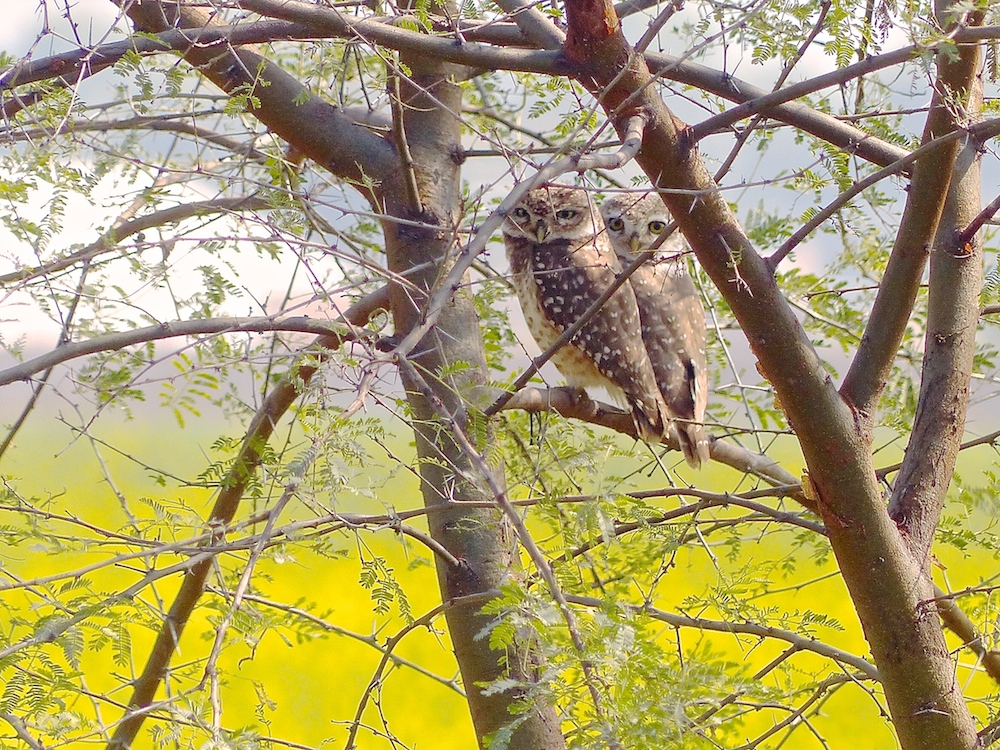Back from the Indian sky
Posts have been thin on the ground around this site recently. One reason is that I’ve been away for nearly a month, traveling and though not entirely disconnected with the internet, at least without a way to get photos off my camera to share. I was lucky enough to spend about three weeks roaming northern India — a country I’ve long wanted to see — just looking, and looking and looking — from the excellent vantage point of open jeeps, trains, tuk-tuks, cycle rickshaws, and a bouncy bus.
There’s no short way to record impressions of any country, but India defies summary even more than most places. So I’m intending to take nibbles of sights and thoughts I carried away with me and present them delicately like morsels of meat offered by a raptor parent to its chick — small pieces easily swallowed, or stored in the crop for later digestion.
And where better for Three Star Owl to start than with OWLS?
 It turns out that India is full of OWLS, and they are often easy to see. The explanation the experts offer is that they are neither hunted for food nor persecuted by the people, so they feel secure in daytime roosts, out in the open. The smaller species (often named “owlets” because of size, not immaturity) string themselves like grapefruit-sized beads on the branches of acacias or rhododendron trees in fields and forests, pressed together in an owly lump in batches of two or several, squinting in the sun and pretending they can’t be seen.
It turns out that India is full of OWLS, and they are often easy to see. The explanation the experts offer is that they are neither hunted for food nor persecuted by the people, so they feel secure in daytime roosts, out in the open. The smaller species (often named “owlets” because of size, not immaturity) string themselves like grapefruit-sized beads on the branches of acacias or rhododendron trees in fields and forests, pressed together in an owly lump in batches of two or several, squinting in the sun and pretending they can’t be seen.
Above are some Spotted Owlets (I believe, although they may be Jungle Owlets — if you know, please chime in!) in eastern Rajasthan, the yellow of mustard fields (grown and pressed for oil production) in the background. (Photo A.Shock)

I greatly look forward to your morsels. Mustard fields… how lovely.
“grapefruit-sized beads on the branches…” I love that.